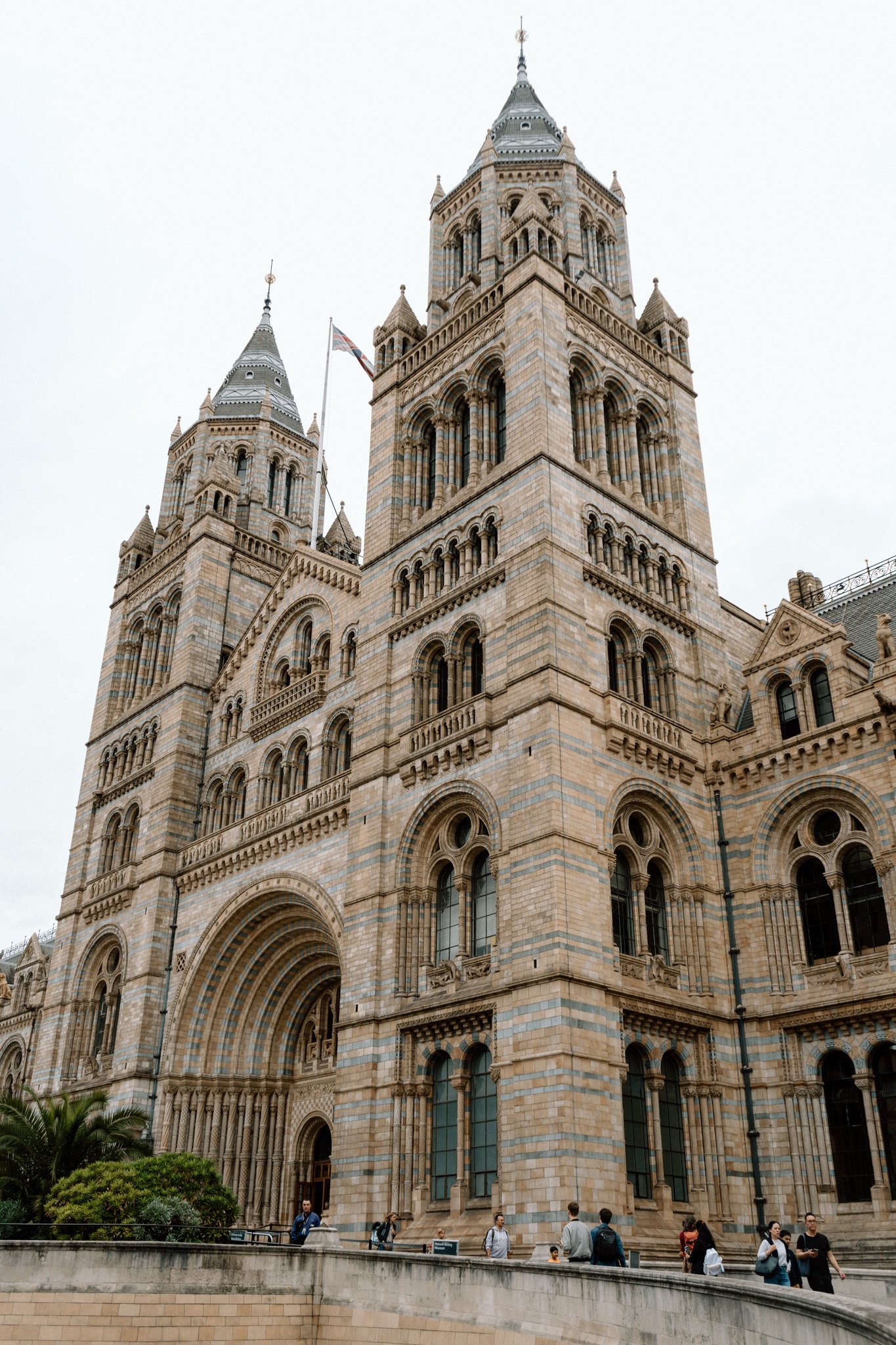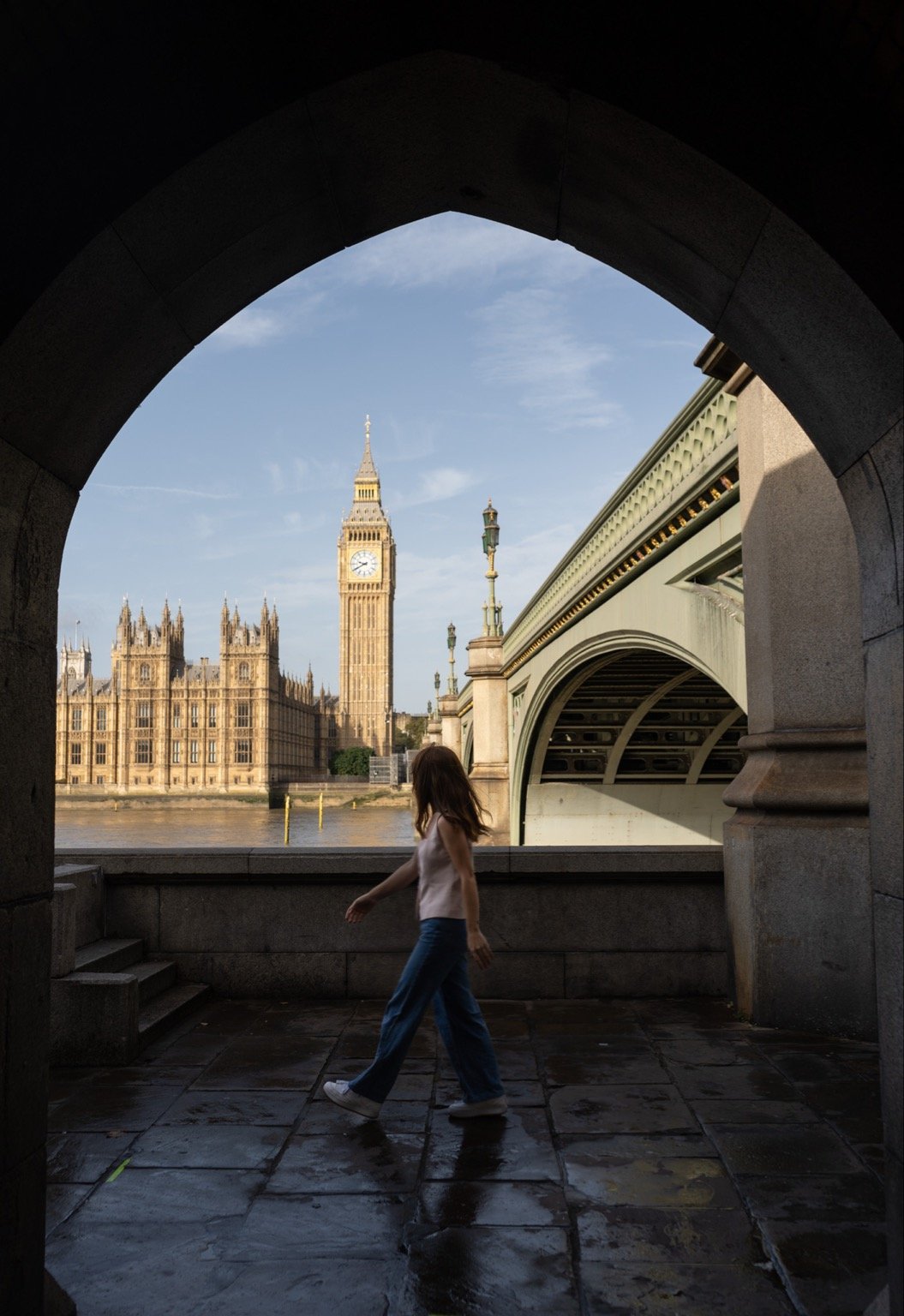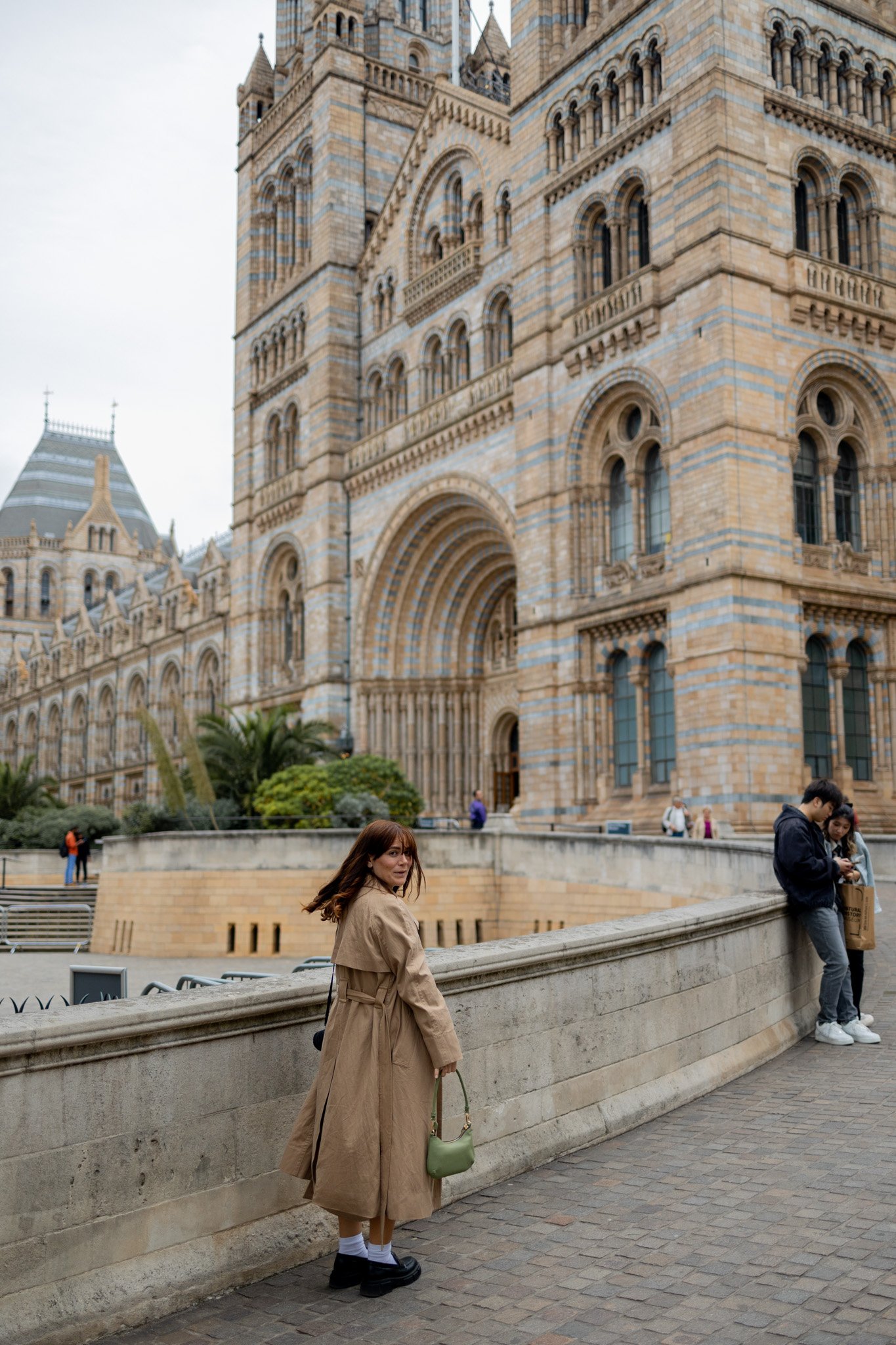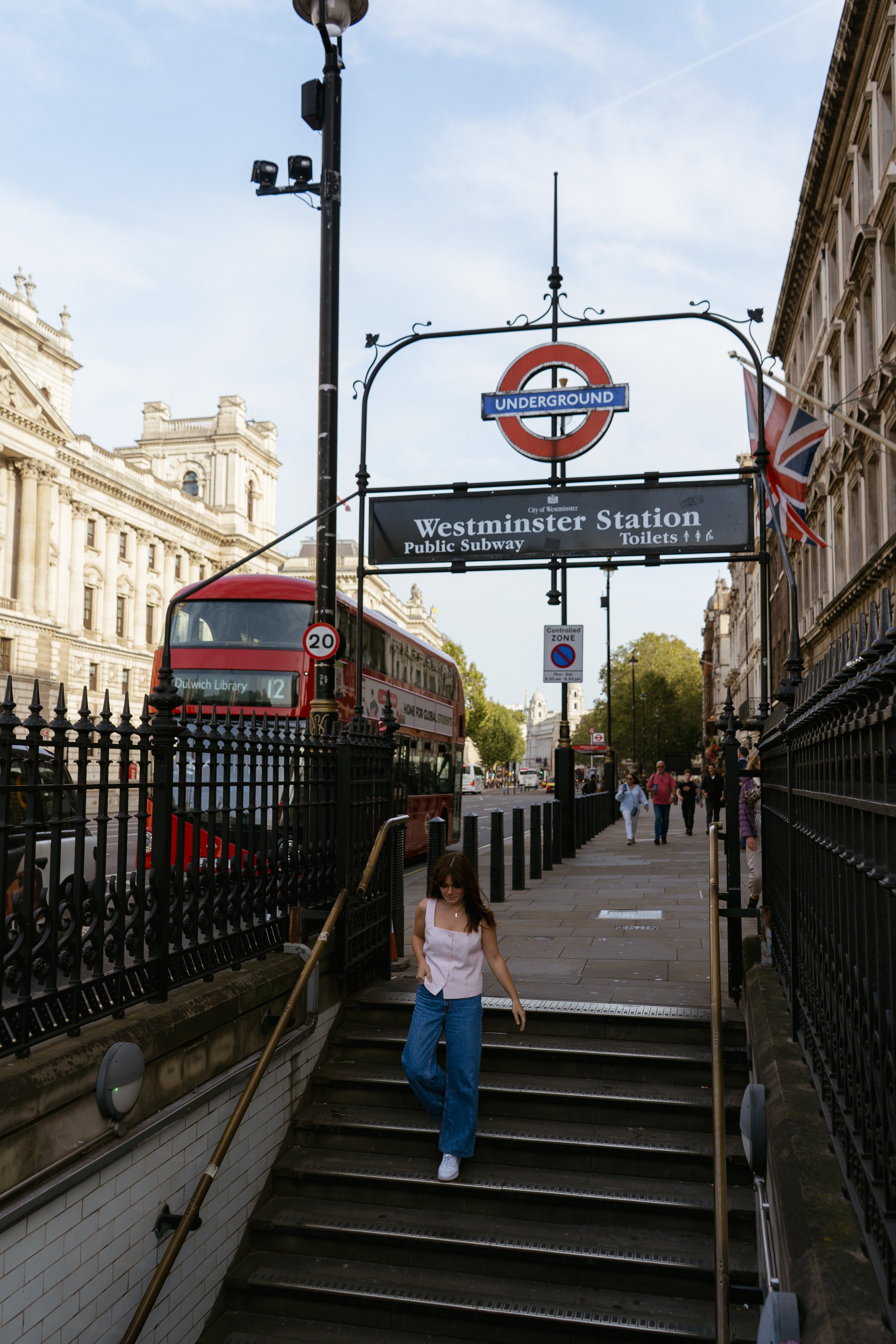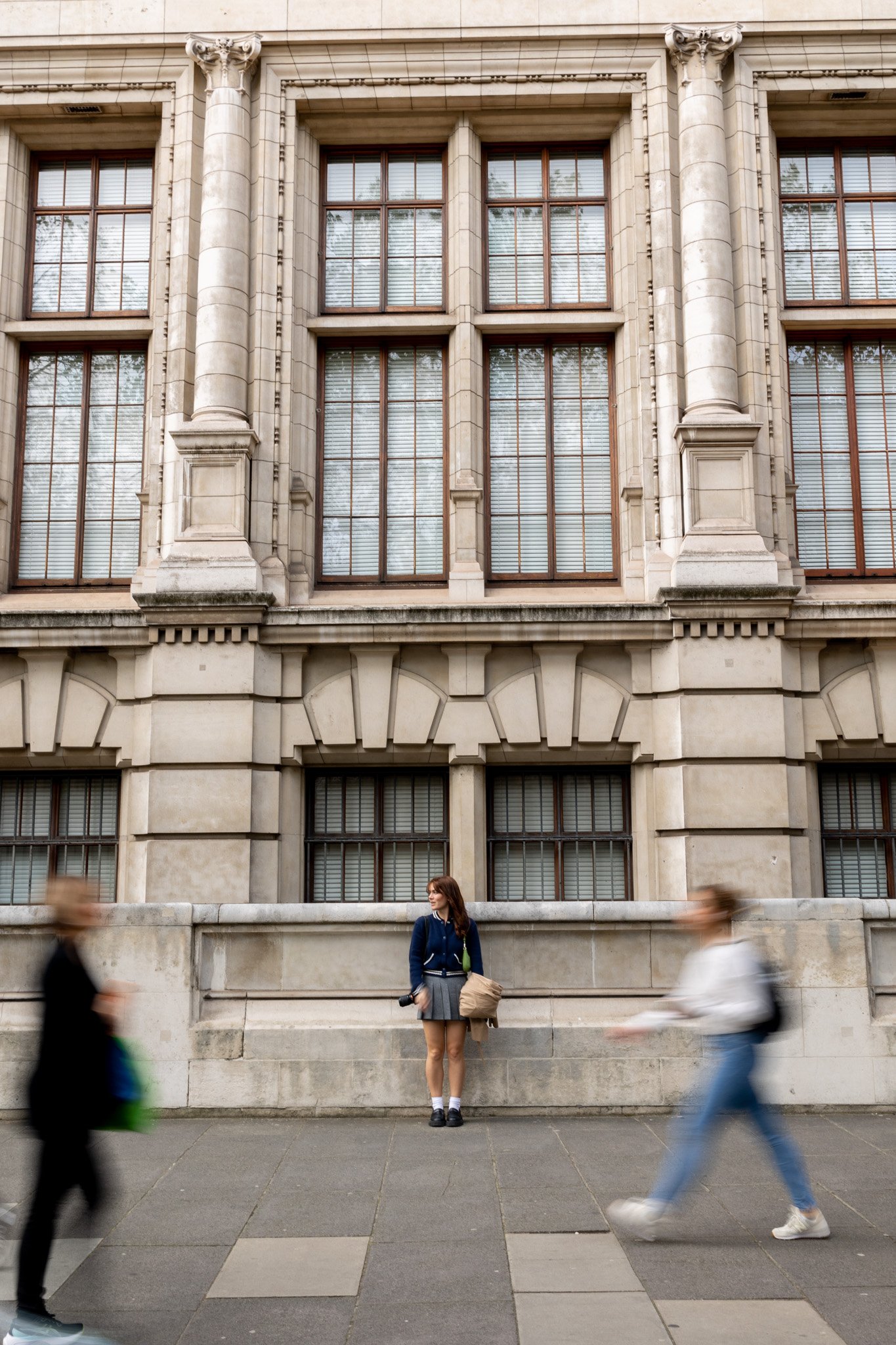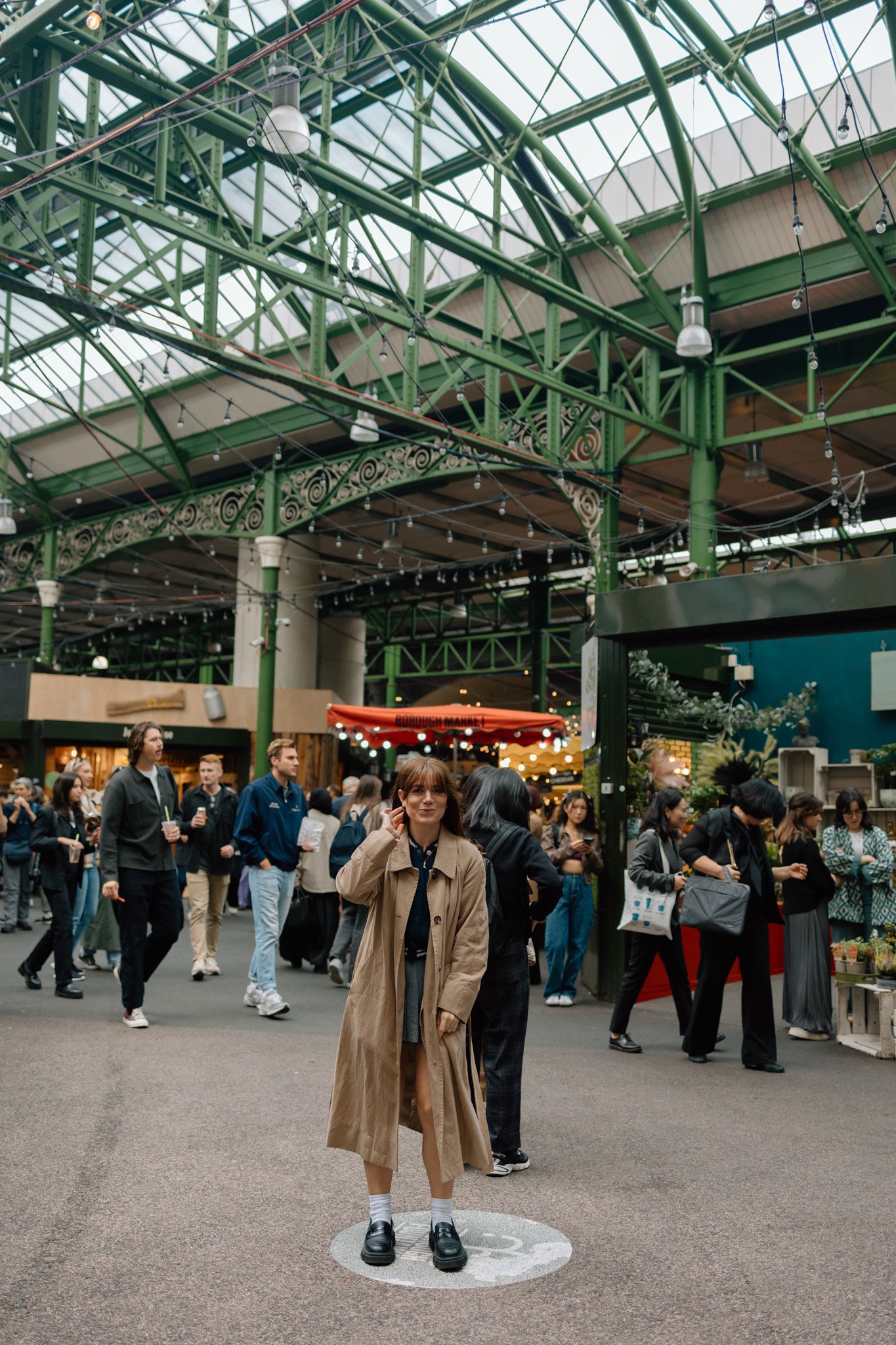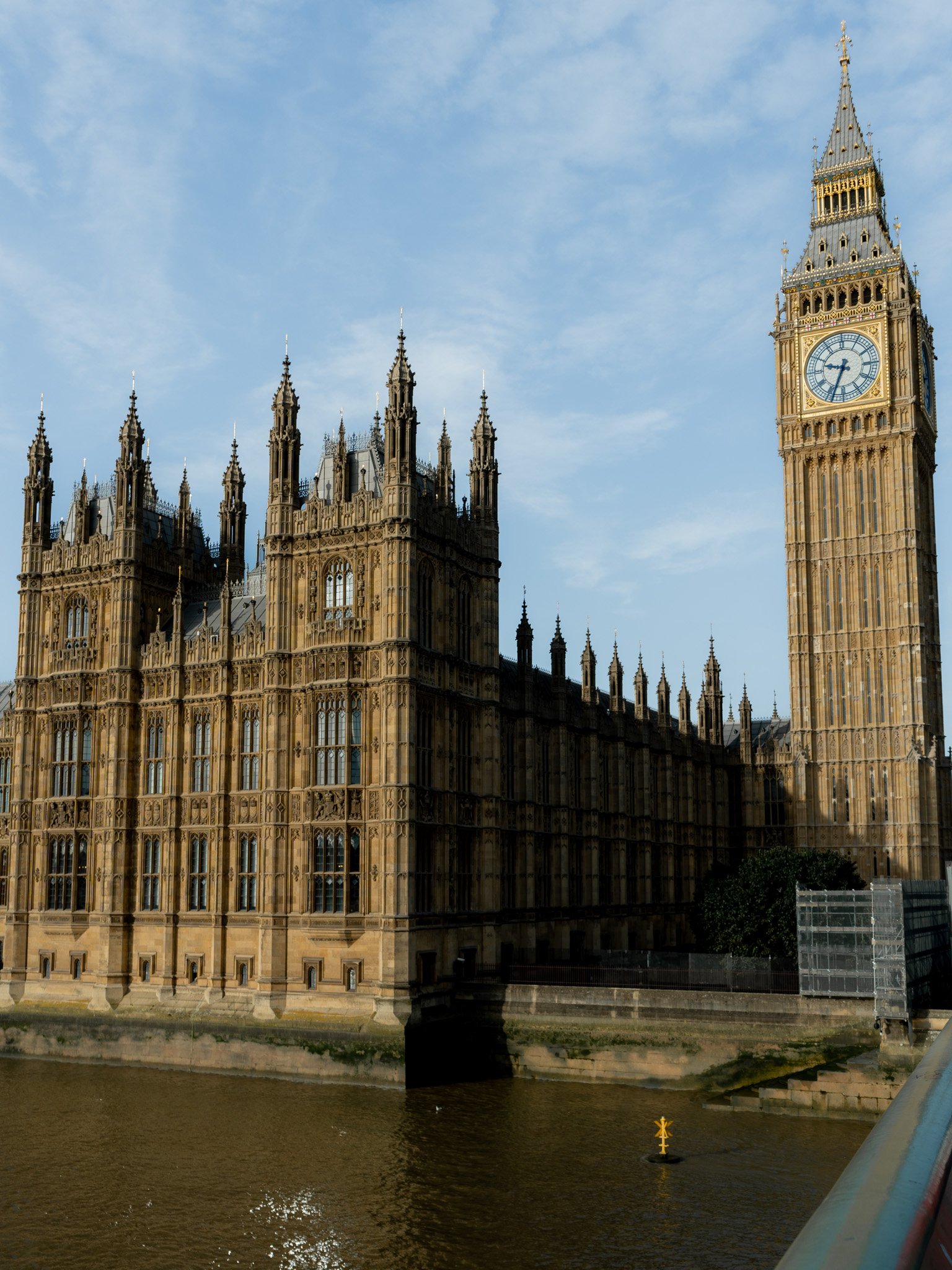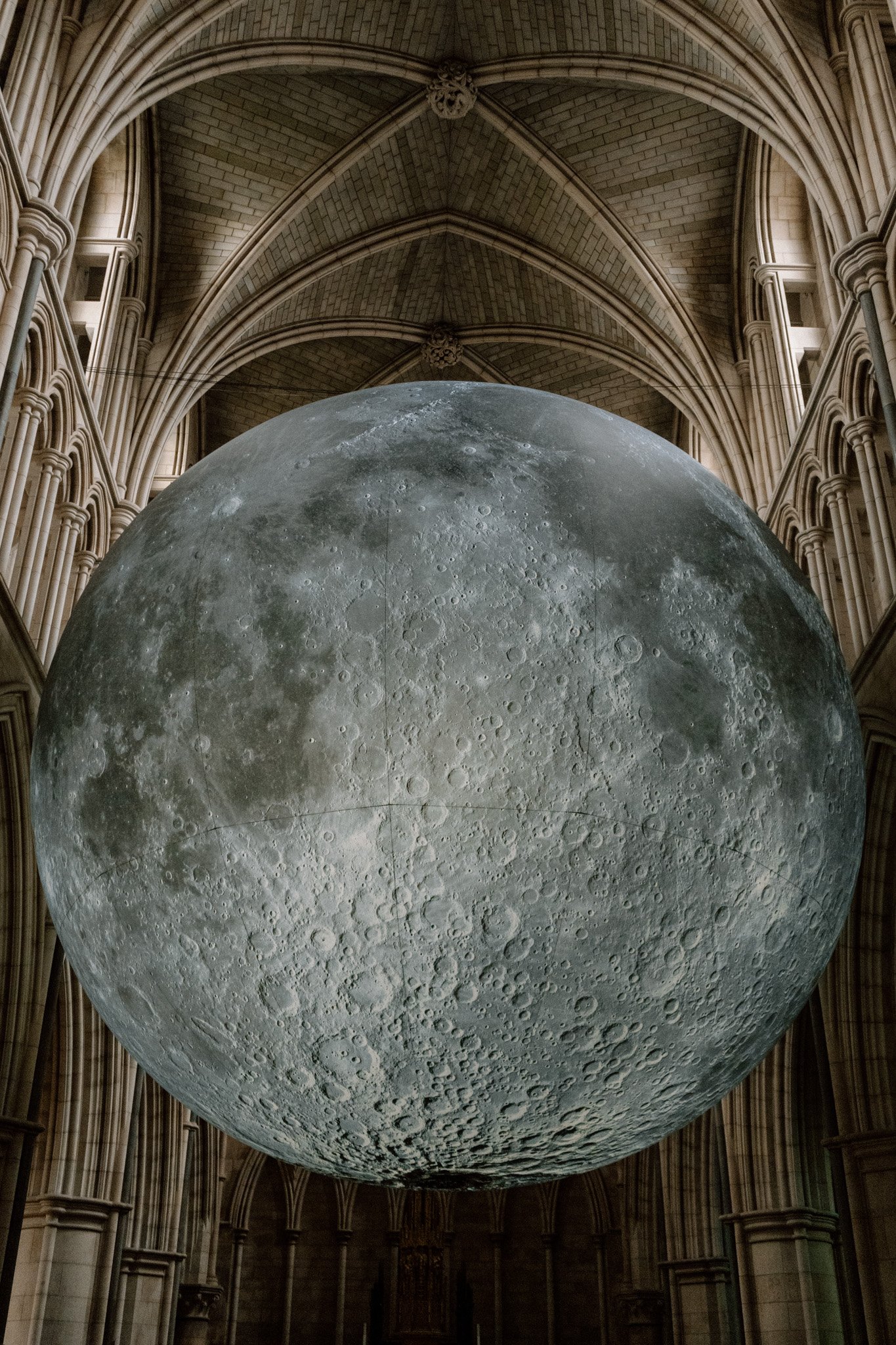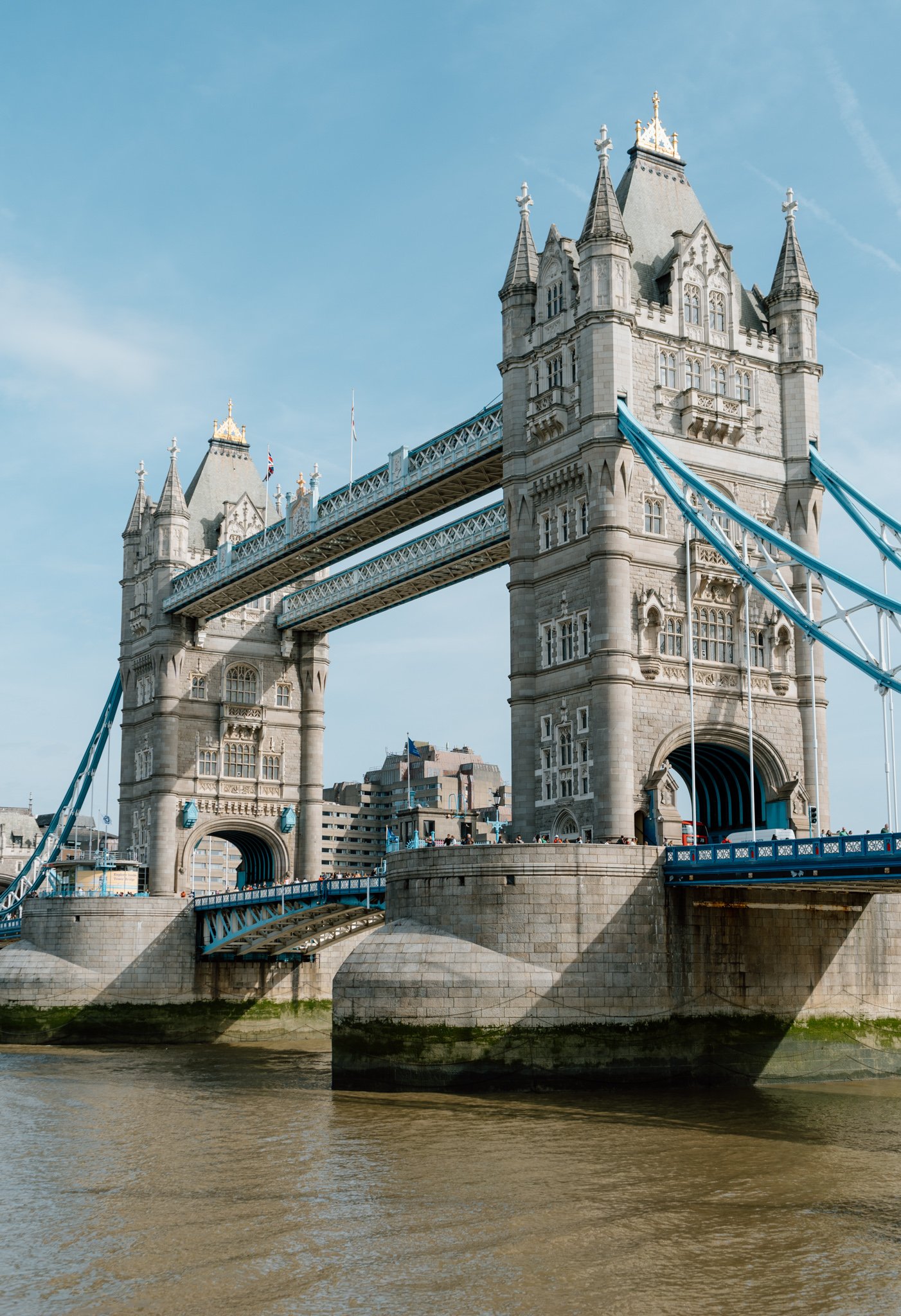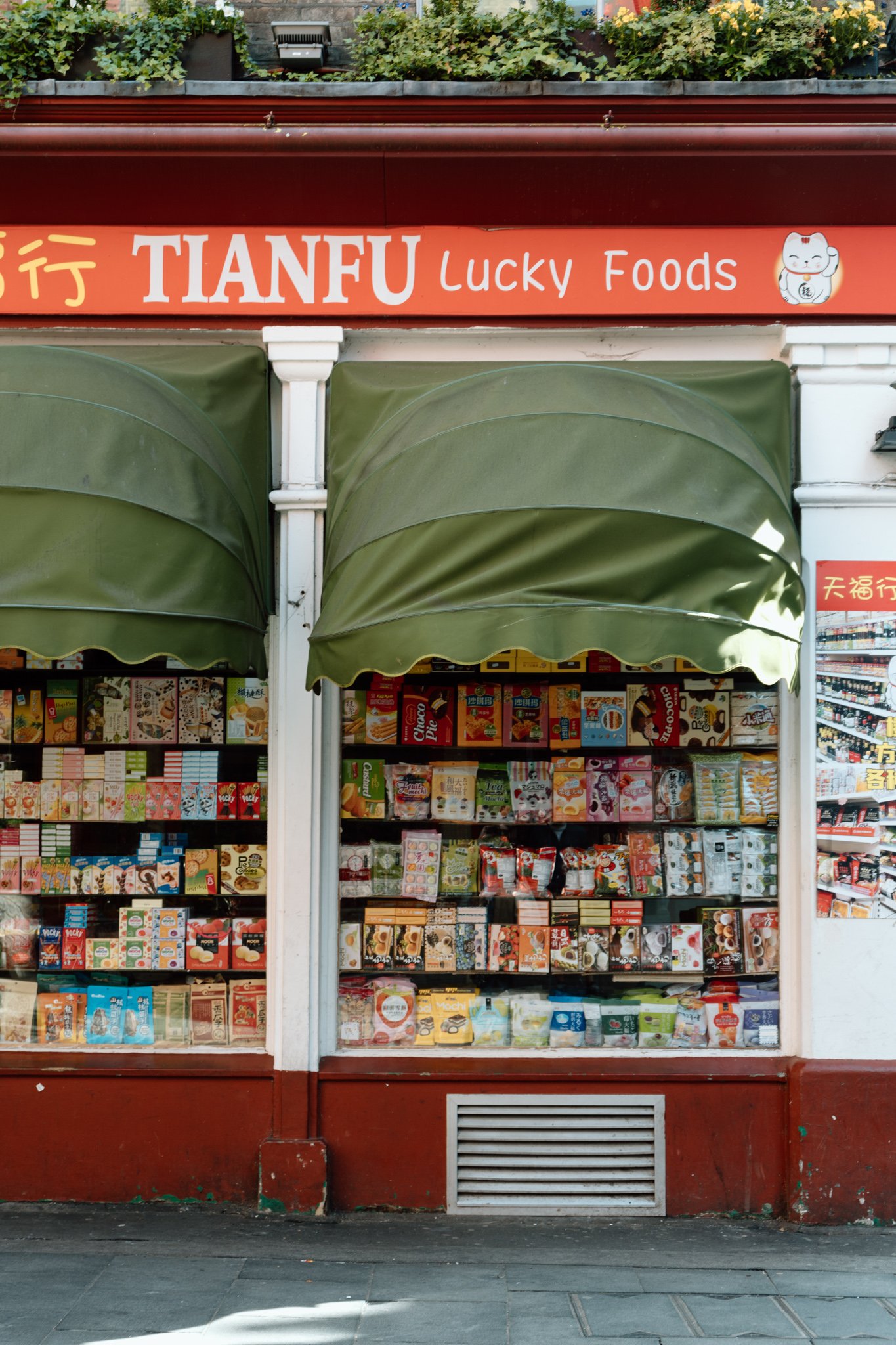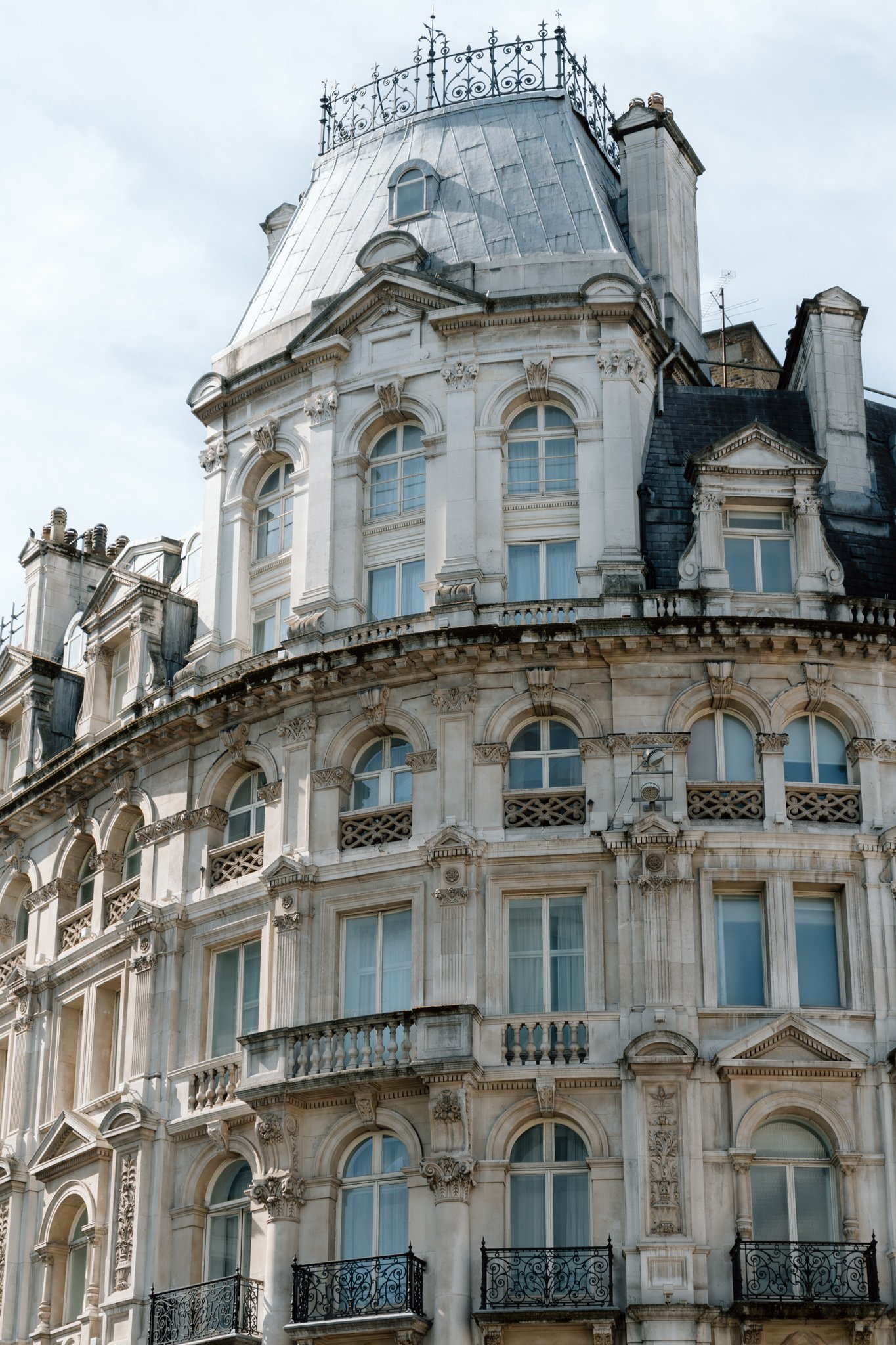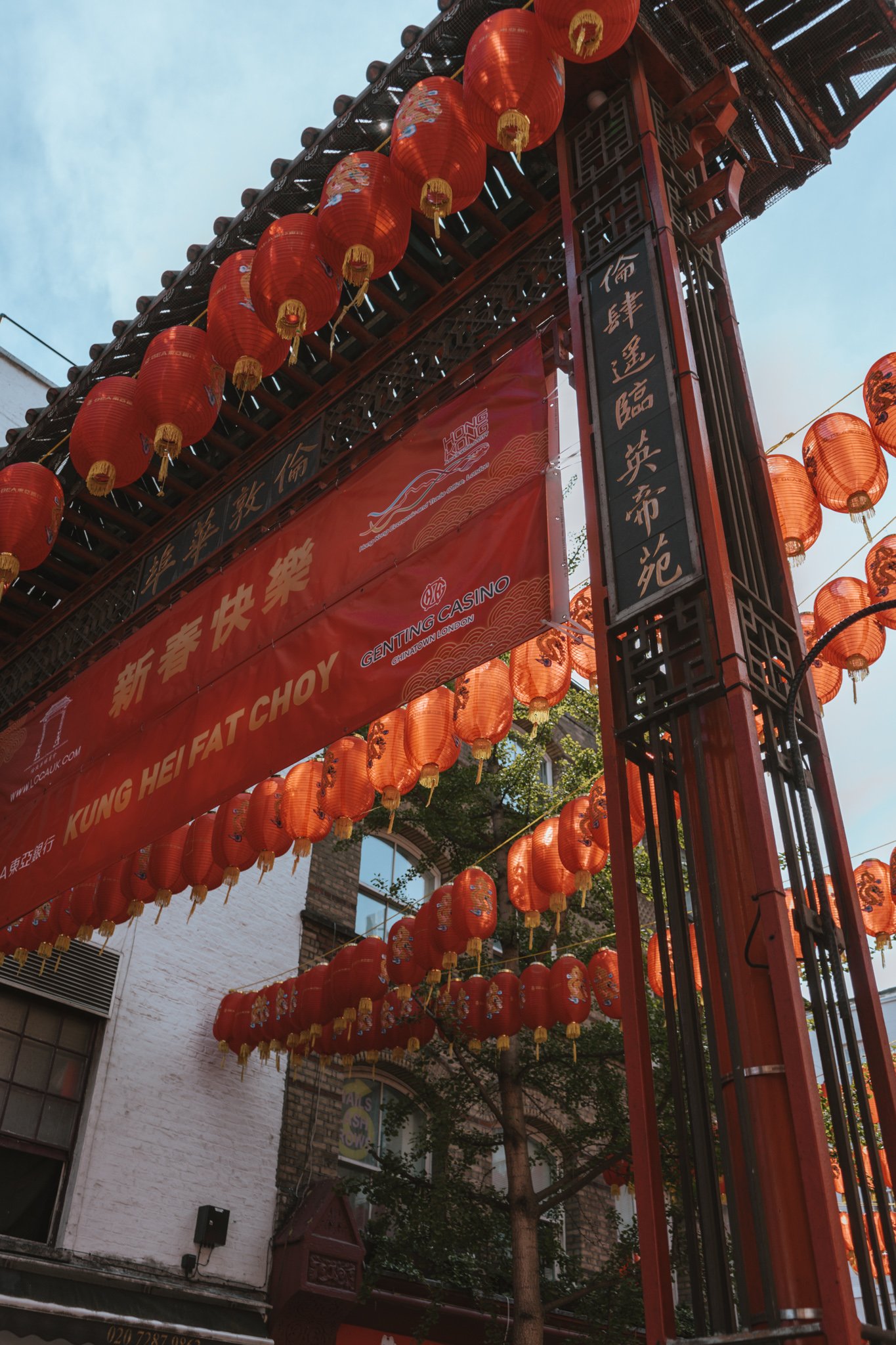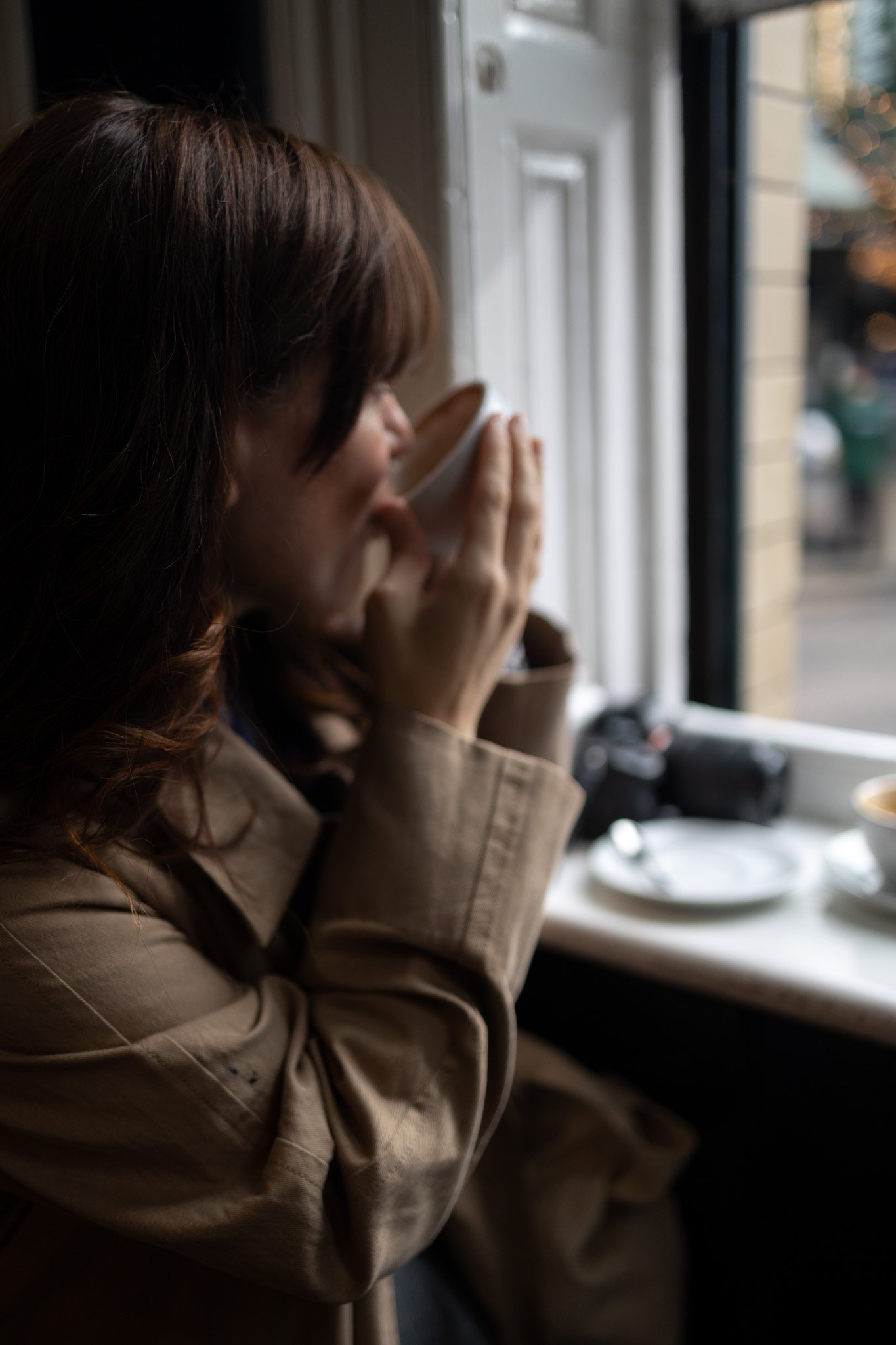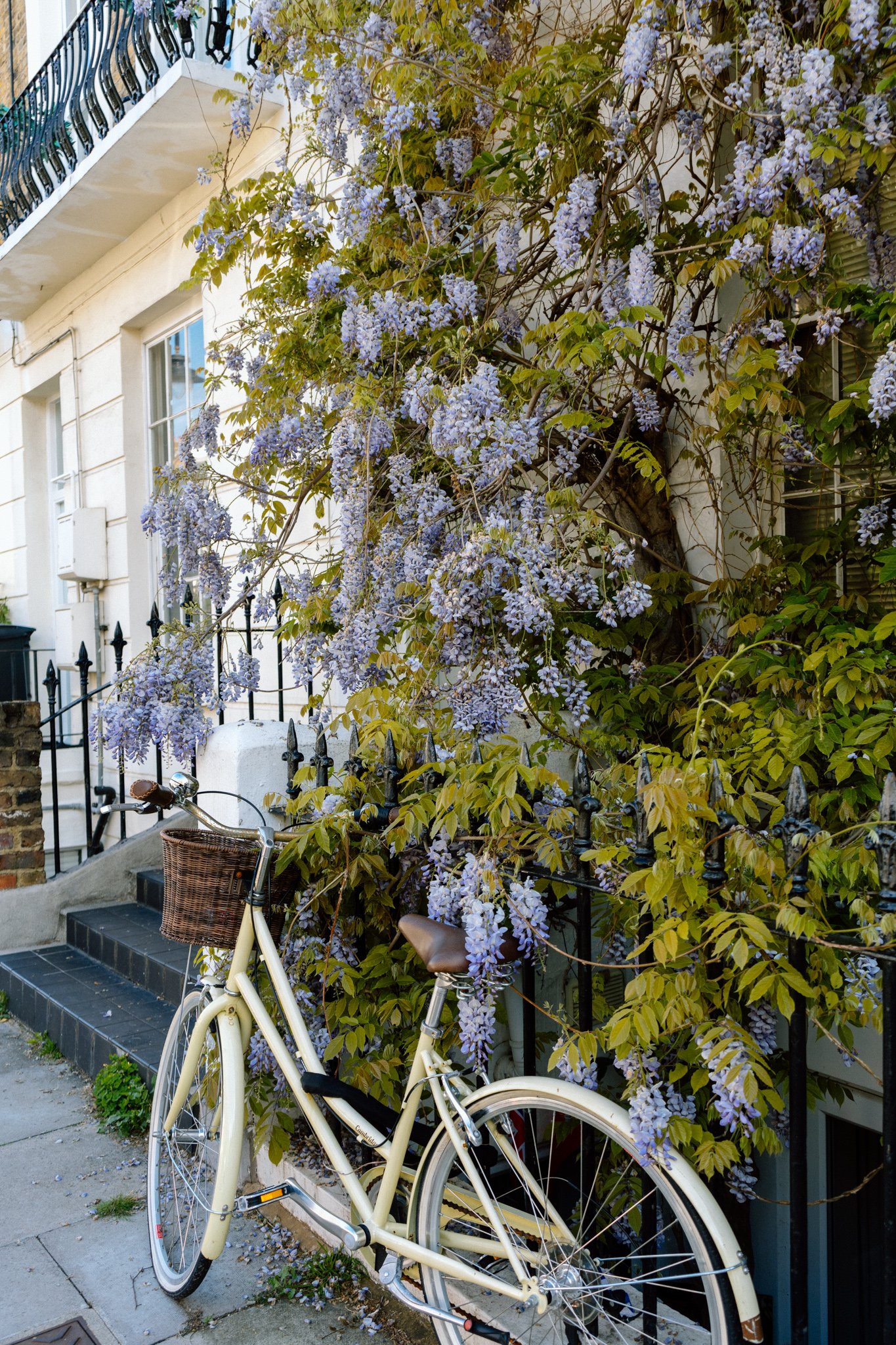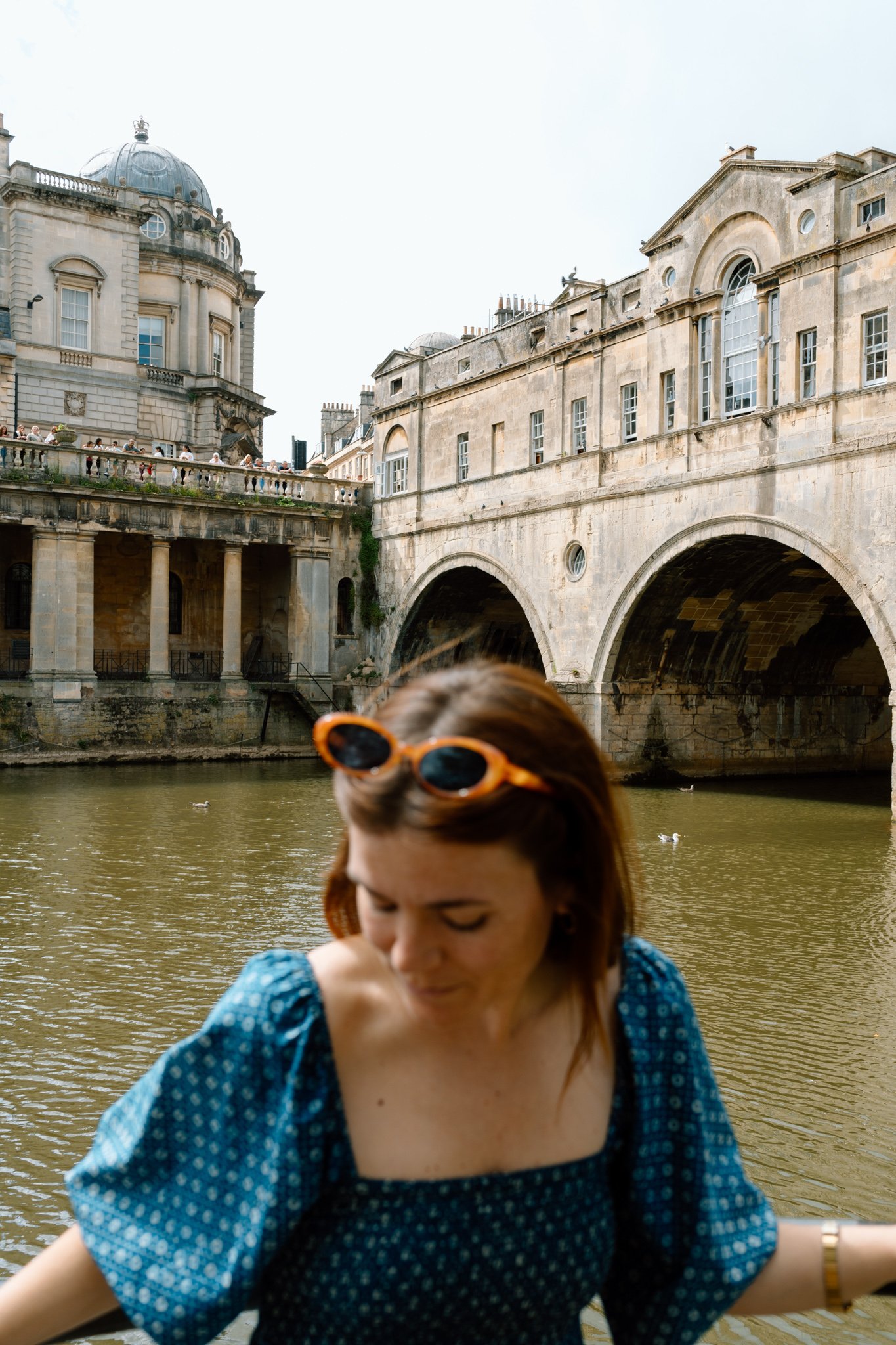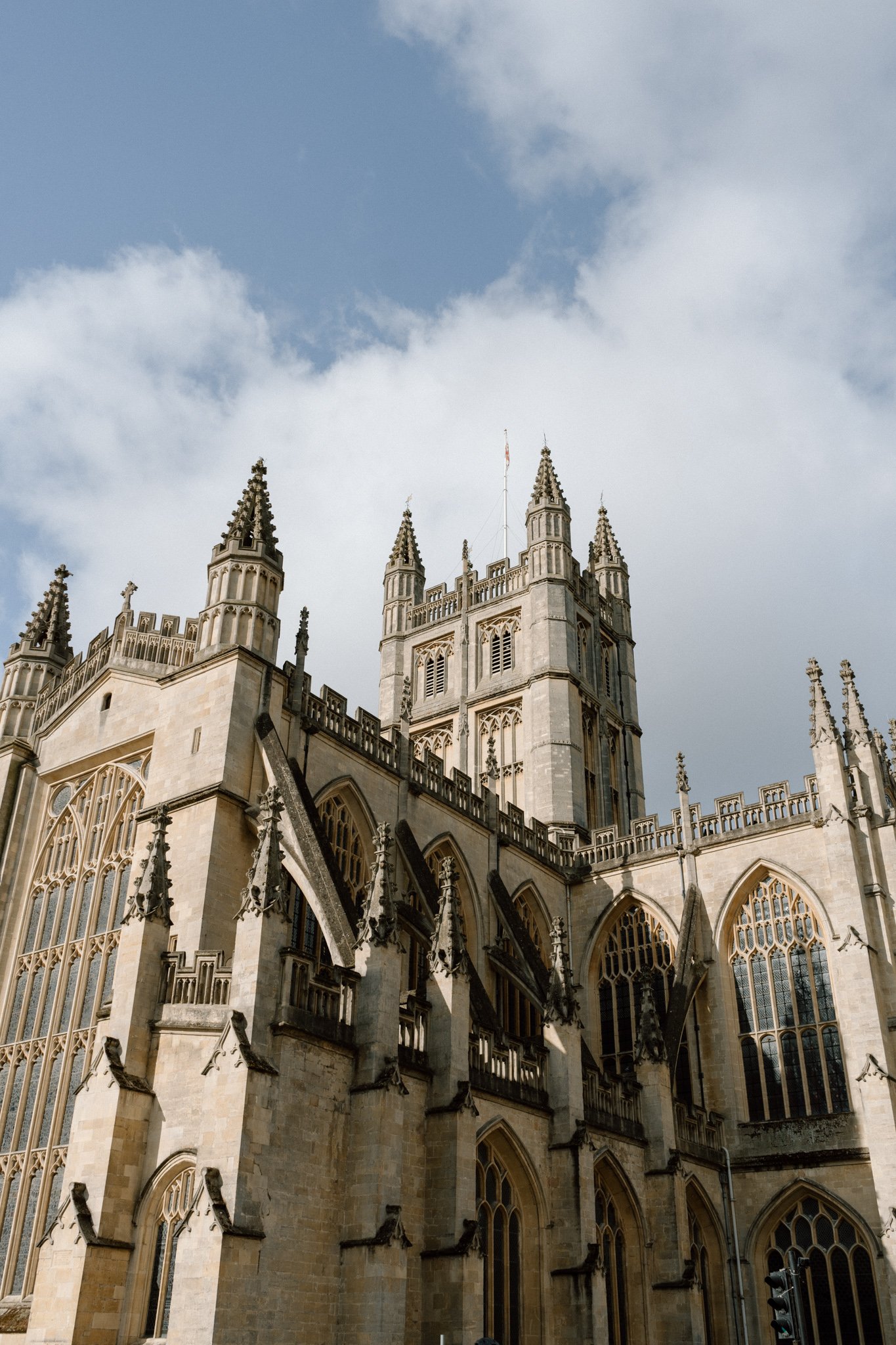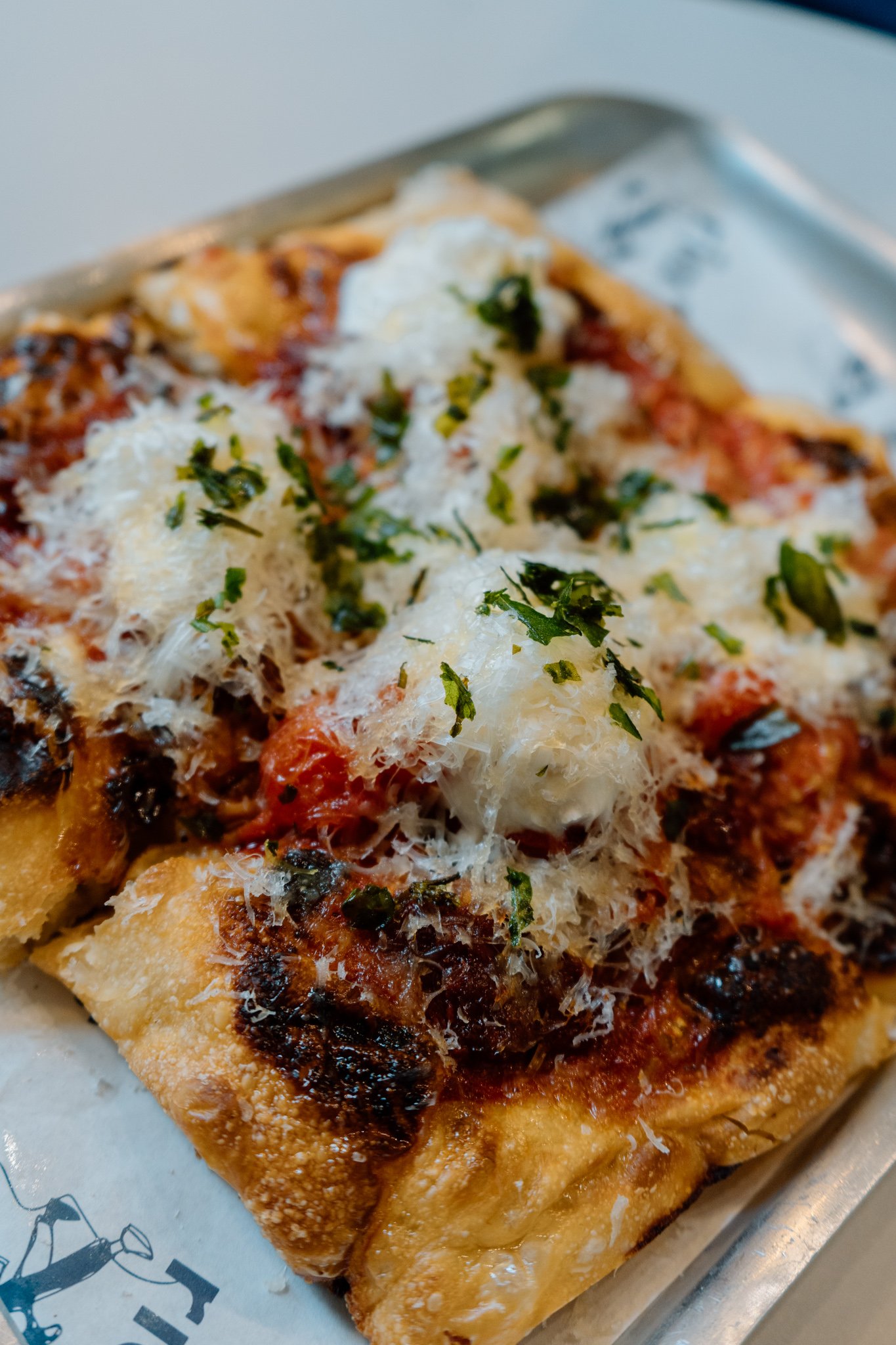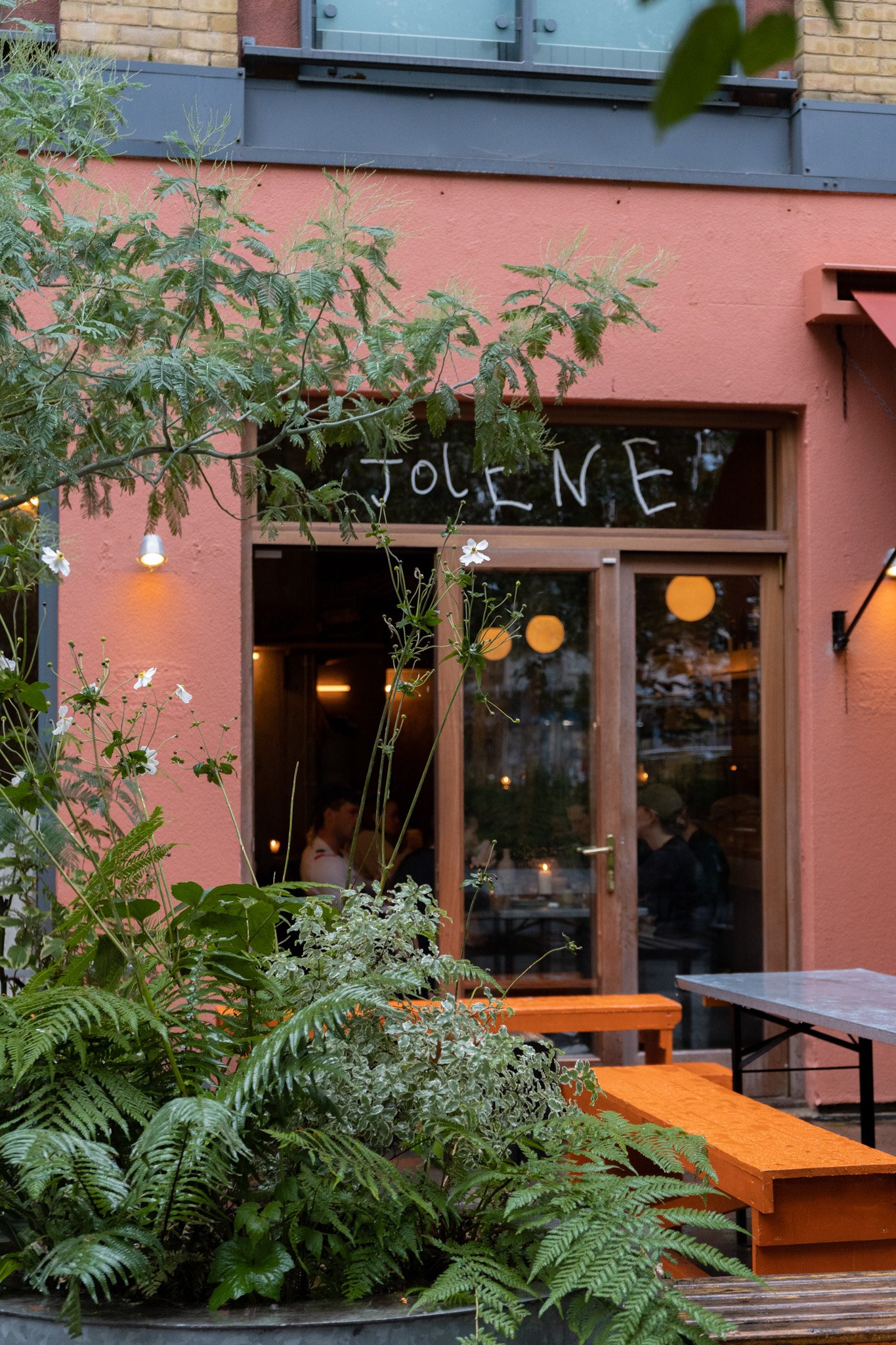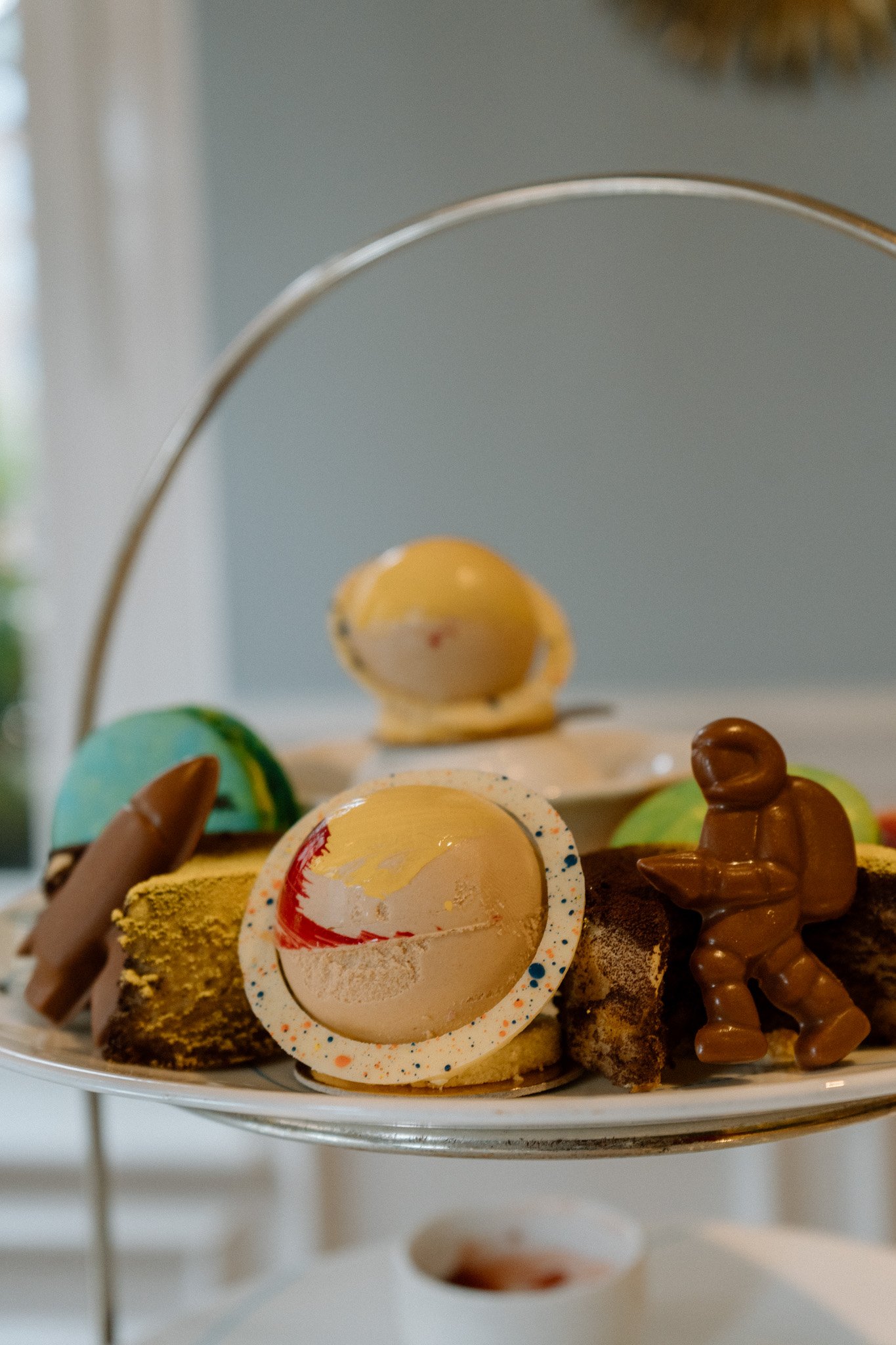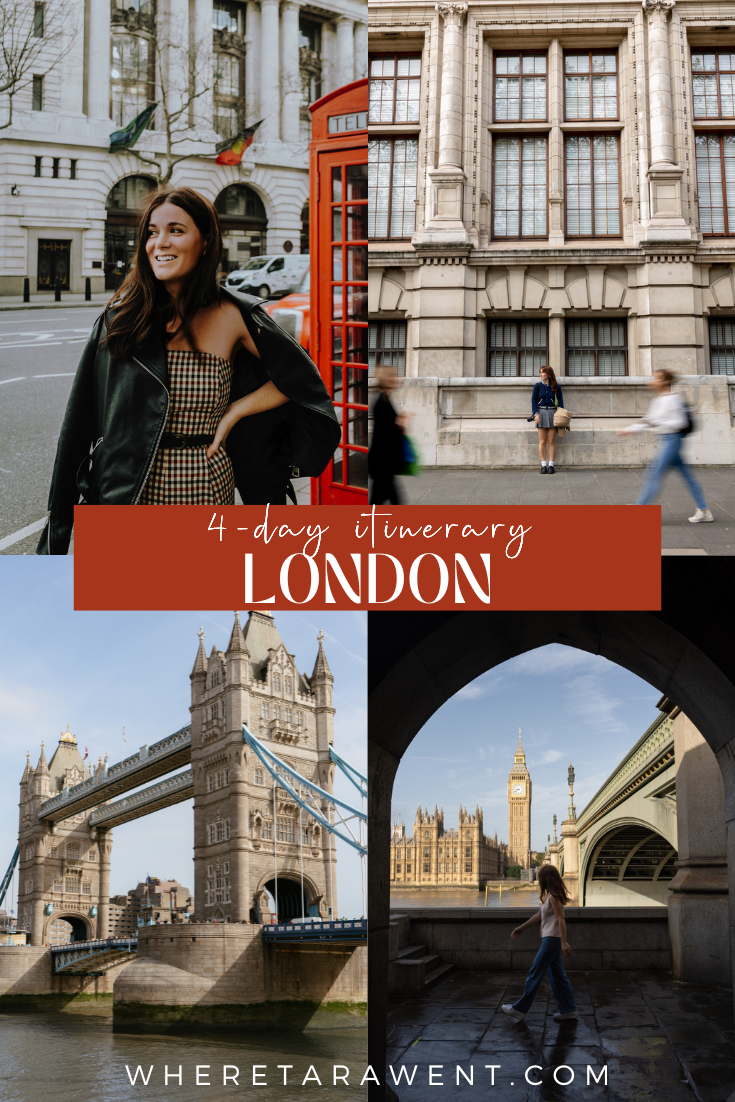Epic 4-Day London Itinerary for Food + Culture Lovers
Planning a trip to London? This 4-day London itinerary is your ultimate guide to the city's best food, coolest markets, and most iconic landmarks.
I always find it difficult to succinctly describe London. And, if I find it difficult to simply describe the city, I imagine first-time visitors must find planning an itinerary for London nigh on impossible. As someone who lived in London as a child and is now based in London as an adult, I know firsthand how hard it can be knowing where to start. This is why I have finally curated this 4-day London itinerary: to help you cut straight to the best of London.
The city’s incredible diversity means that every corner of London is uniquely its own. Teeming with things to do, places to eat, and cultural landmarks, I’ve crafted this 4-day itinerary to help you experience as much as possible. Not to oversell it, but I’ve taken my cumulative years of living in London to create the ultimate itinerary, filled with the best food, vintage shopping, museums, and off-the-beaten-path activities.
best time to visit London ↴
There really is no “bad” time to visit London. The city always has something going on and the weather is highly unpredictable no matter the season. However, affordability, crowds, and temperatures change widely across the year. Summer is arguably the most pleasant time of the year to visit, but it’s also the most crowded and most costly.
Spring (March through May) | The best part about visiting London in the spring is the wisteria, blooming gardens, and flower shows. The worst part? The weather may be bright and warm, or the temperatures could be the same as winter. It’s genuinely a 50/50 toss up. If you’re willing to take a gamble though, you may end up hitting the jackpot with sunny skies and lighter crowds.
Summer (June through August) | Like the rest of Europe, London’s peak tourist season is during summer. The days are longer so you can make the most of every minute seeing the sights. Temperatures are also generally warmer, and the city hosts a bevy of music festivals and community events (think outdoor cinema clubs, cocktail tastings, etc.). However, the crowds are enormous and costs for hotels can be astronomical this time of year. Be sure to make reservations and bookings if there are any ticketed attractions or restaurants on your London bucket list.
Autumn (September through November) | Autumn is an overall winner in my book. If you time your visit right, you’ll get the foliage around London’s parks. Visiting in September means you’ll get a sneak peak at fashion trends during London Fashion Week. The summer crowds have dispersed and temperatures at in the early autumn months are typically quite enjoyable.
Winter (December through February) | Winter is a very festive time of year to visit London. Christmas markets and holiday pop-up events spatter the city, and there is a general cheeriness in the air. However, the days are frustratingly short and rain is more a probability than a possibility.
how many days to spend in London ↴
I have lived in London for years, and my list of things to do and places to eat grows almost every single day. A city as sprawling as London requires endless time to explore in its entirety. However, this 4-day itinerary truly encapsulates the best of the ctiy.
how to get to London ↴
London, being a major city in Europe, makes it a hub for travel. For international travelers, there are four airports to fly into: Heathrow, Gatwick, Stansted, and Luton (which isn’t actually in London proper). Heathrow Airport is the biggest and busiest airport with direct flights from major cities around the world. Gatwick is a great alternative to Heathrow, and has direct public transportation to the city.
If you happen to already be in Europe, I totally vouch for the Eurostar as a more sustainable transportation option. It’s also more scenic! You can take the Eurostar train from cities, including Paris, Brussels, Rotterdam, and Amsterdam.
how to get around London ↴
One of the biggest perks of travel in London is that it can be done entirely with public transport! You can take advantage of the train system from the moment you land at the airport. Navigating London's intricate web of transportation is easier than you think.
The London Underground, affectionately known as "The Tube," is the heart of the city’s transportation network. It’s often the fastest and most convenient way to get around, though buses can sometimes be quicker. Contrary to what many will tell you, you do not need an Oyster card. If you have a. contactless payment method, like Apple Pay or a contactless debit/credit card, you only need to tap in and out of the station. I use City Mapper to navigate the city. The app is free to download and works for both the tube, walking, and buses.
I don’t know why visitors often prefer taking the tube over the bus. The bus is scenic, cheaper per ride, and less stuffy.
Experience London from a different perspective by taking to the River Thames. River boat services offer a unique way to travel between key attractions such as the Tower of London, the London Eye, and Greenwich. Enjoy stunning views of iconic landmarks while avoiding the hustle and bustle of street-level traffic. It's a memorable way to see the city and an excellent option for escaping the crowds.
London has several dockless bike hire schemes across the city, you can easily rent a bike using a smartphone app and pedal your way through London's streets at your own pace. Cycle along the Thames Path, explore the city's numerous parks, or simply weave through traffic-free streets in central London. Just remember to stay safe and follow the rules of the road!
The black cab drivers in London know their way around the city like the back of their hands, but that doesn’t mean they can get you from point A to point B quickly. Due to traffic, cabs can be the slowest way to get around London. They’re also the most expensive. Uber is often cheaper, but again traffic congestion means traveling by car through the city can be a frustratingly slow way to get around.
My favorite way to explore London is on foot. Many of the city's attractions are within walking distance of each other, and strolling through its historic streets allows you to discover hidden gems and stumble upon charming cafes and shops along the way. Just make sure you’re wearing comfortable shoes!
budget for London ↴
Your travel expenditure is entirely based on your preferences and travel habits. It's always a good idea to plan and research prices for specific activities and accommodations to create a budget tailored to your needs. However, here's a rough breakdown to give you an idea:
Accommodation | Accommodation is a real budget killer in London. Even the smallest, most basic rooms will likely cost £80-100 per night. That includes hostel rooms, which feel like it should be illegal. Luxury travelers will spend a minimum of £250+ per night on boutique accommodation, and even then the rooms aren’t particularly large at every hotel. Airbnbs are highly controversial in London, as it faces a major cost of living crisis.
Food + drink | Alongside accommodation, food and drinks will likely be your second highest cost. For a pub meal, expect to pay £30, and remember that alcohol will add up! You can grab pastries and coffee out for £10-15. Tesco meal deals are wallet-saving, but London is such a food-centric city it would be a shame not to budget for meals outside of the supermarket.
Transportation | I would budget £10 per day for unlimited use of public transportation within London. You’ll need to budget more for day trips via the trains.
Attractions, entry fees, + activities | Luckily, many of the city’s museums and art galleries have free entry! Theater tickets can be purchased ahead of time or for less on sites like TodayTix.
travel tips for London ↴
phone theft is rampant
Theft is a common occurrence in most major cities, but phone theft in London is especially prevalent. Thieves tend to target unsuspecting individuals, particularly in tourist hotspots and busy areas. Snatch-and-run and pickpocketing are the most common tactics for phone thieves, so I recommend keeping your phone in a zipped pocket or a cross-body bag when you can. I’d also suggest iPhone owners turn on the“Find My iPhone” tracking feature.
you do not need an oyster card
Contrary to what nearly every travel blog will tell you, you do not need an Oyster Card. Apple Pay and contactless cards all allow you to tap in and out of the tube stations. This also works for London’s buses. The one caveat to this is foreign transaction fees. If your card charges for foreign transactions, it may be better for you to use an Oyster Card.
there is a rail/bus fare cap
This might be a little confusing, so I’ll keep it as simple as I can. London is divided into zones. There is a daily cap on rail and bus fares. If you are traveling a lot using public transport, when you hit this cap you won’t be charged any further for that day/week. You will typically hit the daily cap at around four journeys (within Zones 1 and 2). There is also a weekly cap. You don’t need to count your tube rides or anything, but knowing about the cap can help you budget for your London trip.
However, the cap amount increases the further out of central London into you travel (like to Kew Gardens, etc.). Central London is Zone 1, and the zone numbers go up as you move away from the center. There are also different caps for peak and off-peak travel times.
use the bus
I don’t know why so many visitors to London are afraid/nervous/uninterested in using the bus. The bus isn’t nearly as hot, crowded, or dirty as the tube. There are times when the bus is faster than the tube. But mostly, riding the bus allows you to sightsee while you travel between points of interest.
public toilets are relatively scarce
Public toilets are becoming less and less common in London. Many were closed during COVID-19 and never reopened. Others are locked seasonally during the colder months. Many fast food restaurants and café chains have installed keypads so that only customers with a receipt can use the facilities. The best places I’ve found to use a toilet for free are in London’s free museums. The V&A used to be my go-to toilet stop.
SIM cards + WiFi
There is also plenty of free WiFi across the city in museums, shopping centers, cafés, and restaurants. You may not need to purchase WiFi, though it makes navigating the city a touch easier. SIM cards in the UK are affordable and easy to buy.
I recommend these SIM card providers:
EE
where to stay in London ↴
best areas of London to stay in:
Kensington | For museum enthusiasts looking to be surrounded by quintessential London scenery, Kensington is as British as it gets.
Shoreditch | Shoreditch epitomizes trendy, modern London. If you want to be amongst the city’s trendsetters and creatives, Shoreditch is one of the best areas to stay in. It’s got a buzzing nightlife and is teeming with cafés, pubs, and restaurants.
Notting Hill | Listen, if you’re going to tourist, you might as well tourist all the way. Notting Hill is a great base for London travel. It’s brimming with restaurants and shopping. It’s also relatively central.
Soho | Is this controversial? Because it feels like it. Basing yourself in Soho will come at a price, but you’ll be as central as it gets.
best hotels in London:
The Hoxton | The Hoxton is a boutique hotel chain known for its impeccable design.
The Lost Poet | Ideally located in Notting Hill, The Lost Poet is a beautiful hotel
The Portobello Hotel | Another Notting Hill hotel worth considering is The Portobello Hotel. The interiors here are to die for.
Artist Residence | Search for the best boutique hotels in London and you will undoubtedly be led to the Artist Residence in central London. Every thoughtful detail reflects British sensibility.
Nomad London | Located in Covent Garden, offering elegant comfort.
Sun Street Hotel | Located in trendy Shoreditch, Sun Street Hotel is a relatively new hotel on the London scene. I’ve co-working in their on-site restaurant space many times, and if the food and service are any indication of the overall hotel hospitality, I promise you’ll have a good stay.
room2 Chiswick hometel | Staying for an extended period in London? Consider the room2 Chiswick hometel. As a guest, you can make use of the on-site café, state-of-the-art gym, laundry facilities, and co-working space. Rooms even include their own kitchen! Most impressively, room2 Chiswick is London’s first Net Zero hotel. If you don’t mind staying a tiny bit farther out of the city center, Chiswick is a great location in greater west London.
We love using Booking.com to book the best places to stay around the world.
4-day itinerary for London ↴
A note about this itinerary: it’s packed. Filling four days in London from dawn til dusk is alarmingly easy. However, as with all my itineraries, I’ve crafted this one assuming you’ll read through it and cut anything that doesn’t suit your travel preferences, budget, or general interests. Even after you’ve culled parts of the day, this 4-day itinerary is reasonably full. I also structure the itinerary for efficiency. I’ve mentioned that London is a big city, and I understand how precious travel time is. With that in mind, I’ve curated each day in a way that makes sense so that not a moment is wasted.
Day 1: full English breakfast at Regency Café, Big Ben, Trafalgar Square, Buckingham Palace, British Museum, Covent Garden, Chinatown, Seven Dials Market, Neal’s Yard, dinner at Bar Crispin, + West End show
The first day of this 4-day itinerary acts as an introduction to classic London. And, any Londoner knows that a classic day should start at the Regency Café, where English breakfasts are taken very seriously. This London institution has made cameos in several films.
It doesn’t get more iconic than Big Ben, the colloquial name for the Great Clock of Westminster. From Regency Café, you can walk (18 minutes) or take the tube (16 minutes) to Big Ben. Big Ben is just a stopover on your way to Buckingham Palace.
From Big Ben, it’s another 18-minute walk or 14-minute tube ride to Buckingham Palace. To be honest, I always feel incredibly underwhelmed when I take friends visiting the city to the palace, but I do feel like it’s emblematic of London and a landmark worth seeing at least once. For a taste of pomp and ceremony, time your visit to the palace with the Changing of the Guards (11 AM). You may need to alter your day one itinerary timeline if you want to visit during the changing of the guard. If you fancy yourself a royalist, you can take a tour. This is only available during the summer and you must book in advance.
Walk (20 minutes) from Buckingham Palace down the Mall to Trafalgar Square. Here you’ll find the National Portrait Gallery and the National Gallery. You can almost bet money that there will be a protest, buskers, or both throughout the Square, no matter the time of year. Trafalgar is predictably chaotic, and in the summer it’s particularly crowded. There is a lot of pickpocketing here, so keep an eye on your belongings. The National Portrait Gallery is worth a visit if you’re interested in art. Inside the free gallery is a collection of portraits of historically significant British people. In 1856, when it opened, it was considered quite progressive, as it was the first public gallery in the world dedicated to portraits. The National Gallery, which is also free, is widely regarded as one of the most important galleries in Britain. It houses works by notable artists, including van Gogh and da Vinci.
The British Museum is only a 10-minute tube ride from Trafalgar Square. Yet another free museum in London, the British Museum is quite controversial as it houses a hilariously small number of truly British artifacts. As a friend once said, “It’s a museum in Britain, not a museum of Britain.” Inside, find 60 galleries filled with historical items from ancient Iraq, Italy, Egypt, France, Germany, Greece, China, and India (to name a few). You could spend hours perusing the exhibits, but I recommend an hour or two before heading to Covent Garden.
Walk (13 minutes) from the British Museum to Covent Garden. I love this part of London. The atmosphere is always lively thanks to its endless shops and restaurants. Buskers often perform in the main square and they love involving the crowd. Some of my favorite shops can be found in Covent Garden.
My favorite shops in Covent Garden include:
Choosing Keeping | A beautiful stationery supplies storefront.
Glossier | Your products are delivered to you via a pulley system! It’s also their only UK store.
GANNI | As a GANNI girlie, I can never resist perusing.
Aesop | The most delicious-smelling skin, face, and body products.
From Covent Garden, it’s a short walk to Chinatown. At the beginning of the 20th century, London’s Chinese immigrant population concentrated in the East End. This area was quickly nicknamed “Chinatown.” While the area of London’s Chinatown has changed (it’s now in Soho), today it remains a hub for Asian businesses. It’s an enclave for Taiwanese boba tea shops, Chinese bakeries, and Filipino ice cream spots. Wander the red-lanterned lanes before strolling (6 minutes) toward Seven Dials.
Seven Dials Seven Dials Market. The market is filled with vendors selling everything from Indian street food to specialty desserts. If you’re not up for eating, check out any of the 90+ stores that surround the market. I love the shops in this area, especially the jewelry and clothing stores. While you’re in Seven Dials, don’t miss Neal’s Yard. Named after the British businessman Thomas Neale, this colorful caldesac of shops, wellness brands, and cafés once sat unused and unloved until the 1970s when new life was breathed into it. Grab a chocolate babka or a drink from The Barbary Next Door.
After a long day, there is only one way to end your first night in London: dinner and a show. An early dinner gives you time to enjoy your meal before catching a performance. My dinner pick is Soho’s own Bar Crispin (not to be confused with Crispin in Spitalfields), a lively restaurant and wine bar that embodies the best of London’s modern-meets-intimate food scene. It’s a tiny place that seats less than 18 people, but what it lacks in space it makes up for with its list of 150 natural wines. The excellent wines pair perfectly with Bar Crispin’s seasonal food. For those on a tighter budget, you can get a great, affordable dinner in Chinatown! Imperial China does scrumptious plates of Chinese food, and you get great value for money. Additionally, Seven Dials Market is close and has plenty of food options.
You’ll be spoiled for choice with shows. 40 theaters make up London’s West End. Classics like The Phantom of the Opera and Wicked are performed next to modern favorites, including two of my top picks, The Book of Mormon and Matilda. The Mousetrap is the West End’s longest-running play, and while I haven’t seen it yet, friends rave about it. I also highly recommend small shows like The Choir of Man, which blew me and my sister away! Most performances start at 7:30 PM and run for 2-3 hours, though some shows perform matinees earlier in the evening. For discounted tickets, check TodayTix.
If you have any energy left, finish off your night with a drink at one of the many nearby bars. You’re spoiled for choice, as London’s bar scene is notorious.
For post-show drinks, I recommend:
Speedboat Bar |A brand-new Thai bar in Chinatown! Speedboat takes bookings and welcomes walk-ins, but I’d advise making a reservation to guarantee a seat.
Bar Termini | An Italian bar that will transport you mentally to the heart of Rome, but be sure to book in advance.
Mr. Fogg’s | A Victorian-style parlor in Covent Garden that’s also good for an atmospheric nightcap.
day 2: breakfast at Caravan, Tate Modern, lunch at Borough Market, Maltby Market, Tower Bridge, Tower of London, St. Dunstan in the East, Sky Garden, The Globe Theater
Let’s kickstart your second day in London with a choose-your-own-adventure-style breakfast at either Caravan London Bridge or Where the Pancakes Are. I recommend Caravan, an elevated café with excellent brunch. It was started by three Kiwis who moved from New Zealand to London, guaranteeing the coffee here is done right.
Free to enter and just a 9-minute walk from Caravan, the Tate Modern features some of the city’s most thought-provoking art exhibits. It’s considered the UK’s finest collection of modern and contemporary art. There are often temporary ticketed exhibitions showcased at the Tate Modern. if you are interested, you’ll want to check the Tate Modern’s official website and book a time slot according to your availability.
Lunch at Borough Market is an essential stop on this itinerary. It’s London’s oldest food market and one of my personal favorites. Borough has been around for over 1000 years, but it’s filled with modern favorites alongside more traditional British fare. Whether you’re craving a curry or in the mood for paella, Borough Market serves global cuisine to suit every palette. You won’t go hungry here.
I recommend trying these Borough Market vendors:
Bread Ahead |
Oliver’s Bakery | Oliver’s serves timeless French pastries and bread loaves. I highly recommend stopping by for a grab-and-go treat.
Humble Crumble | I wasn’t into Humble Crumble’s viral dessert, but if you have a sweet tooth this will hit the spot. It’s a decadent dessert worth trying once.
If you’re up for an off-the-beaten-path adventure, walk (20 minutes) from Borough Market to Maltby Street Market. Maltby is smaller and quieter than Borough Market but is equally delicious. There are lots of lovely goodies sold in this curated marketplace.
Did you even visit London if you didn’t walk across the Tower Bridge? Tourists commonly mix up the Tower Bridge with London Bridge, but they’re a relative distance from one another. The iconic suspension bridge is free to walk across, though the foot traffic can get congested.
Your next point of interest is the Tower of London, conveniently located at the end of the bridge you’ve just walked across. The Tower of London is UNESCO World Heritage-listed. It’s probably best known for housing the Crown Jewels, but its history is laden with sinister mysteries, beheadings, and exiled queens. Take a guided tour to understand the Tower of London’s significance fully. Plan to spend between 2-3 hours here.
St. Dunstan in the East is a bit of a hidden gem. These church ruins have become overrun by the garden grounds it sits on. Locals can be found reading or eating there during their corporate lunch breaks. I think it’s quite a cool little spot to stop off for a photo opportunity.
Your next stop is one of my favorite spots in London: Sky Garden. Walk from St. Dunstan in the East (4 minutes) to Sky Garden for some of the best free views of the city. Time your visit with golden hour or sunset to get the prettiest photos! You'll need to book in advance online, but visiting is completely free. Take as long as you like once you're up top but expect to spend about 40 minutes - 1 hour if you aren't dining at the restaurant.
After the Sky Garden, you can call it a night and grab dinner, or head back across the river for a Globe Theater production. near the Tate Modern and Borough Market (which you visited earlier in the day), is a perfect reconstruction of William Shakespeare’s Globe Theater from 1599. It’s located right along the River Thames and regularly puts on adaptations of Shakespeare’s greatest works.
You can have dinner at the Sky Garden restaurant, but I find the food a bit average-tasting and overpriced. Instead, I recommend walking (18 minutes) or taking the tube (13 minutes on the District Line) to som saa, a Thai restaurant housed in a former fabric factory. The industrial-chic interiors of this eatery are super aesthetic, especially under dim evening lighting. Your meal is served on mismatched porcelain plates, adding to the overall vibe.
day 3: breakfast at Kuro, Portobello Road Market, V&A, Natural History Museum, afternoon tea, Hyde Park, Kensington Palace, The Churchill Arms, Kew Gardens, dinner at Crisp or The Pelican
You can start your third day in London with breakfast at Kuro in Notting Hill. Kuro has a sit-down restaurant and a grab-and-go bakery around the corner. The coffee at Kuro is fantastic, but it’s the artisan pastries that the bakery is best known for. Alternatively, you can grab brunch from Farmacy, a light, airy, fully vegan restaurant on Westbourne Grove.
Notting Hill is on almost every visitor’s radar, and for good reason. Mooch around the stalls at Portobello Road Market for vintage goods, antiques, and souvenirs. There is also lots of street food, but I doubt you’ll be hungry after the breakfast you’ve just had.
Take the Circle Line from Notting Hill Gate to the V&A Museum. The V&A Museum, officially known as the Victoria & Albert Museum, was founded in 1852 by the late Queen Victoria and her husband, Prince Albert. It houses a permanent collection of over 2.27 million objects, including portraits, ceramics, busts, and fashion. If you’re interested in art from around the world, it doesn’t get much better than the V&A. It’s yet another free museum in London I frequent when I‘m looking for creative inspiration.
Filled with an estimated 80 million scientific objects and artifacts, including fossils, meteorites, and insects, the Natural History Museum is considered the world’s most important collection of natural history. You’re likely to run into groups of school children here, but it’s fascinating for those interested in geology, botany, entomology, and every field of science in between.
Once you’ve sufficiently quenched your museum thirst, walk to The Ampersand Hotel. The Ampersand has inclusive afternoon tea options for travelers who are gluten-free, vegan, and vegetarian. Afternoon tea here gives you a taste of British sophistication without the pretense of other famous tea spots in London.
Stroll through Hyde Park past Kensington Palace. I recommend getting an afternoon drink at The Churchill Arms, one of London’s most beautiful pubs. No matter what time of year you visit, The Churchill Arms is swathed in seasonal flowers and twinkly lights. Over the years, it’s become quite the photo spot; a symbol of quintessential Britain on the edges of one of the city’s most iconic parks.
Travelers visiting London in the summer should spend an evening in Kew Gardens, which epitomizes manicured British gardens. The gardens are, of course, most impressive in the spring and summer, but there is an annual lights display at Christmas time worth visiting too. Book tickets online in advance!
On your way back into London proper, stop in Hammersmith for dinner at Crisp. Before going there, I had heard so much about Crisp that I was afraid it wouldn’t live up to the hype it receives online. Instead, I left with a belly full of what I’m certain is the best pizza in London. Alternatively, grab dinner in Notting Hill at The Pelican for an elevated British pub experience. I only recently visited the Pelican, and I can’t stop raving about it.
day 4: brunch at Dishoom, Shoreditch Street Art Tour, Spitalfields, Brick Lane, dinner at Bistro Freddie
Brunch at Dishoom is essentially a “London rite of passage.” While most tourists marvel at the King’s Cross Dishoom location (which is beautiful, by the way), I prefer the Shoreditch location, which is where you’ll begin your fourth and final day in London. You will almost definitely need a reservation since Shoreditch is a very popular area of the city. Locals and tourists both agree that Dishoom brunch is nearly impossible to beat. I love indulging in a naan roll or their signature black daal. Try their unlimited chai and thank me later.
After a Bombay brunch, wander through the graffitied lanes of Shoreditch, one of London’s trendiest neighborhoods. I recommend a street art tour of East London. Street art tours around Shoreditch last between 2-3 hours, depending on which tour you book, but they all offer insight into some of London’s most renowned graffiti artists and muralists.
Amid the maze of mural-covered streets in east London is Brick Lane. This part of London lives up to its reputation for impeccable vintage shopping. It’s also earned a reputation for tasty international street food. However, it wasn’t always known for its culinary variety. In the 1960s and 1970s, Brick Lane had an abundance of one thing in particular: curry houses. Due to its concentrated Bengali immigrants, this was the go-to corner of London for Indian, Pakistani, and Bangladeshi cuisine. Today, however, the area’s culinary delights have expanded thanks to its food market.
My favorite Brick Lane food spots:
Beigel Bake | Since 1974, Beigel Bake (the bagel shop with the white sign) has been serving as London’s favorite carbohydrate haven. The service here is 0/10, but the line moves quickly and the food is great value for money. Know your order before you get to the front of the line.
DF/ México | While definitely not authentic Méxican cuisine, this Cali-Mex restaurant serves up tacos, churros, and margaritas your tastebuds won’t want to miss out on.
Katsute100 | A Japanese-inspired café, home to the famous matcha mille-feuille crepe cake.
Preem | A long-standing favorite amongst locals, Preem is one of Brick Lane’s oldest Balti houses.
Spitalfields is rapidly gentrifying, but its history as the 17th-century refuge for French Protestants who brought their silk-weaving skills to the area is still reflected in its fashion scene and industrial fabric warehouses. Spitalfields is a great area for shopping, particularly jewelry, fashion accessories, and clothing. Inside the Spitalfields covered market, independent market vendors sell sunglasses, wellness tonics, and souvenirs. The Spitalfields is also home to many popular retailers like &OtherStories, Nobody’s Child, and Astrid + Miyu.
You’re in for a treat for the final dinner of your 4-day London itinerary: Bistro Freddie. This relatively new eatery has the atmosphere of your favorite restaurant but the excitement of a menu from somewhere you’ve never tried. The handwritten menu is scribbled with seasonal dishes that change regularly. Their char-grilled broccoli with butter beans still lives rent-free in my mind.
additional things to do in London ↴
Columbia Road Flower Market | Every Sunday, throngs of people funnel themselves through Columbia Road Flower Market in search of houseplants and bouquets. Live music often plays at the top of the road, which is lined with cafés and small businesses. This is a great addition to your itinerary, especially on a summertime visit when your travel dates fall on a Sunday.
London Eye | You might be wondering why I didn’t include the London Eye in this itinerary, and I promise there is a very simple explanation: I find it skippable. It’s just a sophisticated Ferris wheel; overpriced and overrated. Typically, I don’t recommend it to people visiting London. However, I can appreciate wanting to tick it off your bucket list, so I’ve added it here as an additional thing to do in London. If you go with tempered expectations and purchase a ticket in advance, I think you’ll enjoy it.
Hampstead Heath | This is one of London’s most famous green spaces sprawling over 800 acres. It served as the inspiration for C.S. Lewis’s The Chronicles of Narnia.
Victoria Park | Victoria Park is the largest park in East London, known mostly for hosting festivals like All Points East.
Camden Market | Camden has long been a hub for counter-culture, punk rock, and aspiring artists of every variety. Its market, the biggest in London, is open daily. I haven’t added it to make the itinerary more efficient and because, while the food is noteworthy, the other shopping is not.
day trips from London ↴
Windsor
time from London: 1 hour
Windsor is a town synonymous with royalty. Its most famous landmark is, without question, Windsor Castle. Built by William the Conqueror in 1070, Windsor Castle is the largest and oldest occupied castle in the world. Transport yourself back in time with a pint and a roast dinner at the Two Brewers pub, which has been serving hungry visitors in Windsor since 1791.
Cambridge
time from London: 1 hour
There is a longstanding rivalry between England’s most esteemed university towns: Oxford and Cambridge. I’ll say right off the bat that, for me, Cambridge beats Oxford without much of a fight. And, as far as day trips are concerned, Cambridge will charm you instantly. Grab a coffee from Espresso Library and a Chelsea bun from Fitzbillies, then go punting along the river.
Oxford
time from London: 1.5 hours
Oxford is undeniably pretty. Known by many as “The City of Dreaming Spires”, Oxford is famed for its top-tier University where royalty and scholars have been given an exceedingly good education.
Bath
time from London: 1 hour 40 minutes
Time and time again, Bath is voted the prettiest city in Britain, and it’s not hard to see why. Bath is a day trip awash with Georgian architecture, Roman history, and a culture of literary excellence.
Read more | Bath in A Day: The Ultimate Austenian Itinerary for Bath, UK (coming soon)
Brighton
time from London: 1 hour
Brighton isn’t just for London commuters. Hipsters, beach dwellers, and music fanatics flock to this creative enclave on the coast. It only takes an hour to get from London to Brighton’s narrow streets, filled with vintage clothing, record shops, and independent eateries.
Bristol
time from London: 2 hours
Bristol, in my humble opinion, is wildly underrated as a day trip from London. After your train ride to Bristol, grab one of the famed pastries from Farro Bakery or the notorious donuts from Pinkmans (they are so good). For lunch, foodie’s should book a table at Wilsons or Root. Don’t miss the Clifton Suspension Bridge!
Hitchin Lavender Fields
time from London: 30 minutes
Hitchin is a twee village that quietly sits north of London. While it’s a lovely day trip for a quick escape from the city, its primary point of interest is its lavender fields, which bloom in late summer.
Read more | 8 of The Best Places to See Flower Fields Near London
Cotswolds
time from London: 4 hours by train, 3 hours by car
I wouldn’t call the Cotswolds a “day trip” from London. I’d highly recommend making a weekend of your time there. The most annoying “thing” about the Cotswolds, from a traveler’s perspective, is that it is best experienced with a car. That point on its own isn’t entirely a deal breaker, but when you realize how ridiculous the parking situation is throughout the Cotswolds’ most popular villages, it becomes a real pain. Still, it makes for a beautiful road trip if you’re up to the task!
Read | Ultimate Guide to the Cotswolds (coming soon)
where to eat in London ↴
I’ve mentioned specific restaurants that align with my 4-day itinerary, however, you might find yourself wanting to pick and mix your food stops. In that case, here are the very best places to eat in London, including some of my absolute go-to’s when showing friends the city.
best breakfast, brunch, + coffee in London
Jolene
Pique Café
Daisy Green (the Paddington location is my favorite)
Burnt
Terry’s Café
Where’s Fred
Milk
best food markets in London
Maltby Street Market
Camden Market
Borough Market
Spitalfields Market
best places for dinner in London
Ria’s in Notting Hill
Crisp in Hammersmith
Dishoom
Bao
Papi
best pubs in London
The Jolly Gardener in Vauxhall
The Pelican in Notting Hill
The Albion in Islington
The Owl + The Pussycat in Shoreditch
best vegetarian + vegan food in London
Mother in Hackney Wick
Farmacy in Notting Hill
Mildred’s in Covent Garden
Holy Carrot in Knightsbridge
OoWee in Brixton
Club Mexicana in Soho
Purezza in Camden
best afternoon tea in London
The Ampersand in Kensington
The Wolseley
Fortnum + Mason
sketch in Mayfair
Read more | Best Vegetarian Restaurants in London (coming soon)
map ↴
Find everything you need for an epic 4-day itinerary in London for food and culture lovers on the map below.

